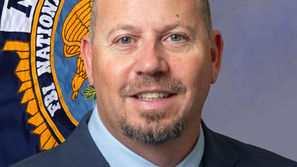1947: The year Madera became a city
- Bill Coate
- May 2, 2020
- 4 min read

Madera County Historical Society
This photo of the Old Timers Parade was taken in 1947, a major watershed year in Madera’s history.
The year 1947 was a milestone in Madera’s history. When Jan. 1 dawned, our town found itself with a population of nearly 10,000, which was an increase of almost 48 percent since 1940.
An increase in population of that magnitude brought many changes. One was in law enforcement.
The city police force was reshuffled on Jan. 1, 1947. Roy Mackey took over the duties of the night jailer, which was formerly held by R. E. Rodman, who became a full time bailiff. L.G. Hawkins moved from night officer to parking meter patrol. Ray Lasswell took over as city traffic officer, replacing John Morse, who resigned to go into business. Woody Hefner was hired to take over the night officer duties, joining Don Harrington, Elmer Pavey and Charles Bowers. Bill Burgess, the new merchant patrolman, was designated to assist the night force when necessary. Chief of Police Walter Thomas and Sgt. Les Flum worked the day shift downtown.
Three weeks later, the city council gave each police officer a raise, including Chief Thomas who went from $235 to $300 per month. By Aug. 4, 1947, the entire department had new uniforms and more men.
On the county level, Roy T. Wolfe was appointed as a new assistant district attorney by district attorney John Boyle. Wolfe had been in Madera about a year and had established a private practice.
Meanwhile, Ray Andress, whose resignation as undersheriff of Madera County became effective on May 1, 1947, left for Washington, D.C., where he commenced training with his new employer, the FBI. One of the county’s most efficient and best-liked officers, Andress had served for two years as undersheriff under Sheriff W.O. Justice.
As if they had to make the police force earn its increase in pay, the city passed a parking meter ordinance and installed 470 parking meters downtown. The new law went into effect on Jan. 13, 1947. The fine for violating the parking meter ordinance was $1 and $2 for double parking. The parking meter allowed 12 minutes for one cent, 24 minutes for 2 cents and 36 minutes for 3 cents. There was a 12-minute parking limit in front of Madera’s two banks; 24 minutes in front of the post office, and one hour on the rest of Yosemite Avenue. Most of the other streets were limited to two hours.
The parking meter ordinance didn’t go over with everyone in town. On Jan. 23, 1947, a lengthy protest meeting by farmers and businessmen was held at the Madera Business Men’s Association and a resolution was passed requesting the council to take out the meters at once.
However, the city had signed a one-year contract with the Duncan Meter Corporation before the meters were installed. The contract had a clause stating that if at any time prior to the end of the first year, the city failed to make $3 per meter per month, the meters could be removed.
On Feb. 3, 1947, the city council settled the dispute after the opponents aired their grievances. The debate lasted for two hours, and the council held firm; the meters had turned out to be moneymakers.
Modernizing the local police force and installing parking meters were not the only things that population growth forced on Madera. When Arthur Voorhees’ petition to erect a garage and automobile sales agency showroom at the corner of West Yosemite and Q Streets caused a controversy, folks realized that city government needed a little more sophistication. What they came up with were zoning ordinances and a planning commission, and things have never been the same since.
The council turned down Voorhees petition after Cornelius Noble presented his own petition, with 75 signatures, objecting to Voorhees’ plan.
The council then instructed city attorney Sherwood Green to formulate plans for a city zoning ordinance and a planning commission. At the same time, Lewis Albee, secretary of the Business Men’s Association, came to Voorhees’ defense and asked the council to take another look at his application. “Due to the fact that we are inviting new business to Madera, we feel that we owe it to this new businessman to see if we can help him work out an amicable and satisfactory solution to his problem,” Albee wrote.
The case put the whole town on the horns of a dilemma. It raised the question of whether the West Yosemite intersection at Howard Road would develop into a community business district or remain strictly residential.
Voorhees said that he had the Willy’s Jeep franchise and bought the property on Yosemite thinking he could go into business there. He said he had two carloads of jeeps and a carload of station wagons due to arrive in Madera in April.
Support from the Business Men’s Association notwithstanding, Voorhees’s petition remained dead in the water, and on Nov. 6, 1947, Madera’s first planning commission was formed. Mayor John Gordon named seven men to the agency. They were Walter Chandler, assistant city attorney; Jack Brammer, city fire chief and building inspector; William Metz, city engineer; Ed Fleming of Curtin and Fleming; Ralph Stoetzl of Valley Feed and Fuel; William Seabury of Seabury and Copland insurance; and Henry Scheidt, real estate broker.
And so it went in 1947. Twice as many people meant lots of change. Besides a modern police force, parking meters, and a planning commission, Madera built the War Memorial at Courthouse Park, ground was broken for the new St. Joachim School, and the National Guard decided to build an armory in Madera.
Direction for the future had been set. By the middle of the 20th century, our town had become a city.


























Comments